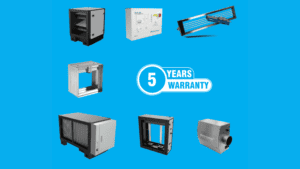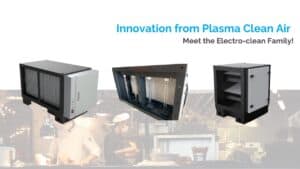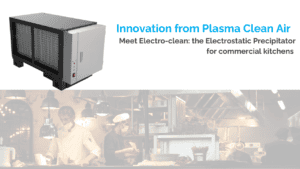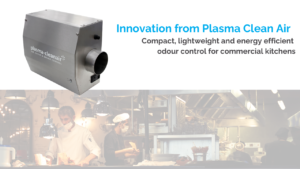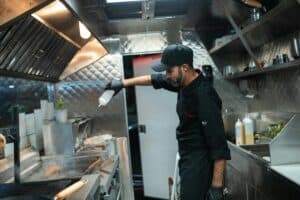When it comes to the performance of your grease, odour and smoke control equipment for commercial kitchens, correct installation is key.
In this blog article we highlight what can go wrong, based on 20 years in the business of kitchen odour control filtration. We will talk about correct ordering of equipment, installation in accordance with DW/172 and DW/144 and access for Planned Preventative Maintenance. But before we get into this, let’s discuss how important it is to understand the cooking application as much as possible.
Odour Risk Assessment
There are 8 basic questions that we need to know in order to propose the most appropriate grease, smoke and odour control equipment which is correctly sized for your commercial kitchen application.
- Dispersion – high or low level extraction?
- Proximity of any receptors such as windows, doors and air intake louvres?
- Size of the kitchen / number of covers?
- Cooking type to assess levels of grease, smoke and odour?
- Cooking equipment to assess levels of grease, smoke and odour?
- Flow rate of the kitchen extraction system?
- Extract duct run (metres) to determine whether there is suitable dwell time for UV Ozone
- Is there designated plant space for odour control equipment or is plant space limited?
You will most likely recognise some of these questions which are based on the EMAQ+ Odour Risk Assessment and DEFRA Guidance on the Control of Odour and Noise from Commercial Kitchen Exhaust.
If you’d like to know more or would like us to carry our complimentary Odour Risk Assessment, get in touch with our experienced team.
General layout of kitchen ventilation and filtration equipment
For a detailed specification for Kitchen Ventilation Systems, please refer to BESA’s DW/172 , but here are a few basics which, if not adhered to, can result in issues.
It’s important to have the fan at the end of the extraction system so that air is being pulled through the system rather than pushed. This is especially important for kitchen ventilation to prevent any odour and / or ozone-laden air being pushed into the building.
When it comes to grease, smoke and odour control equipment, it is recommended to install odour control equipment after grease control. This is because high levels of grease will react with and quench ozone, preventing the ozone from reacting with gaseous odour. Likewise, high levels of grease will coat activated carbon, preventing adsorption of gaseous odour.
For UV ozone systems to operate effectively ozone must have sufficient dwell time in the extract duct to break down gaseous odours before reaching the atmosphere. The minimum dwell time required for ozone injection systems is 2 seconds, an easy way to calculate the length of extract duct required is to multiply the extract main velocity (m/s) by two.
It’s also important to note that for commercial kitchen filtration, all filtration systems whether in-duct UV ozone, ozone injection, activated carbon, electrostatic precipitators or passive filtration work better when there is supply air to cool the extraction air.
And if you are struggling to find plant space for grease and odour control, read our article about optimising plant space with canopy UV.
On the whole, our recommendation would be to arrest grease as early as possible in the extraction system with High Efficiency Canopy Filters and Electrostatic Precipitators ESPs and then treat odours with UV ozone or activated carbon.
Installation of equipment in accordance with DW/144
It is vitally important that the kitchen ventilation system and filtration equipment is installed by a fully qualified installer who is familiar with BESA’s DW/144. This is the Standard Specification for ductwork manufacture and installation and is aligned to all current BS EN ISO and other standards and regulations.
Filtration equipment such as ESPs require laminar air flow to function correctly. This is achieved by locating ESPs at least 1m from bends and ensuring that correct transitions are in place. Without these measures in place, air flow will be turbulent and the equipment will not operate to their optimal efficiency.
In accordance with DW/144, ductwork transitions should be 22.5 – 30 degrees to support laminar air flow and will ensure that air spreads across the face of the filters rather than jet streaming through it.
Reduce equipment duty for high-odour applications
For applications producing high to very high levels of grease and/or smoke it’s important to reduce the equipment duty to 80% of the ESP’s maximum flow rate. Also consider using double or triple pass ESP filtration. This will ensure extract ductwork remains clean post-ESP as well as preventing fume being visible at the discharge point.
It is also worth remembering that air velocity through filtration equipment needs to be 2-3m/s. Velocities greater than this will reduce contact time and result in sub-optimal performance.
Interlocking with air flow
Electrically fed odour control equipment must be interlocked with airflow to ensure that it operates only when there is air flow. This ensures that the equipment switches off with the extraction system which saves energy and prevents ozone falling back into the kitchen. This can happen with all ozone-generating equipment including ESPs, in-duct UV systems and UV ozone injection.
Allow for maintenance access…please!
In order to keep your equipment running effectively, Planned Preventative Maintenance (PPM) is required to exchange and clean the filters. It is therefore important to allow suitable access. ESPs require 600mm to open the door and remove the ESP collector cells; in-duct UV systems require 1100mm to withdraw the lamp frame.
Over the years we have seen many examples where it is not possible to get access which results in aborted service visits. Examples include obstructions such as partition walls, gas and water pipes, boxing in and struts in front of access doors.
Summary
This article has considered some the key points when it comes to selecting and installing grease, odour and smoke control equipment.
From our experience, when things go wrong it is due to incorrect installation and not adhering to the basics laid out in BESA’s DW/172 and DW/144.
Having the correct equipment is one thing, but equally important is ensuring that it is placed in the correct order. For those of you old enough to remember, it’s a bit like the famous Morecambe and Wise / Andre Preview sketch…playing the right notes in the wrong order.
Don’t let this be you 😊
Get in touch With Plasma Clean Today!
If you’d like to know more or would like us to carry our complimentary Odour Risk Assessment for your project, get in touch with our experienced team.

